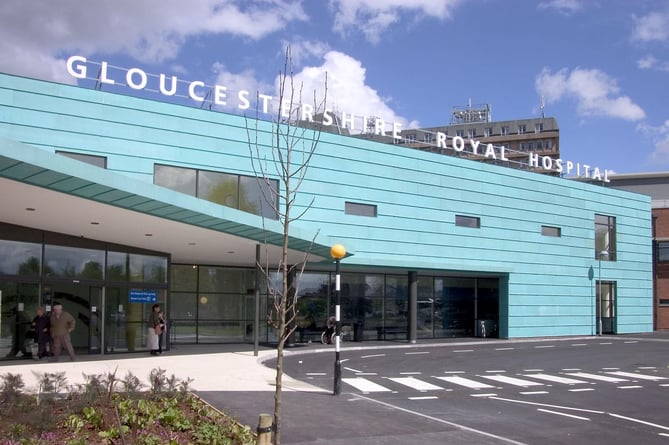NHS partners in Gloucestershire say they are working “more closely than ever before” to make improvements after a report highlighted issues surrounding ambulance handover delays and signposting to services.
Local NHS partnership One Gloucestershire released a joint statement last week on the action being taken to address issues identified in a Care Quality Commission (CQC) inspection, which took place in November and December last year.
The report, published last week, said that staff had worked well in challenging circumstances but that pressures on workers across all services needed to be addressed.
Since the inspection, the NHS partners have looked to improve signposting to services after inspectors found the system was “complicated” and that staff and patients weren’t always able to understand which service was best suited to their needs.
The issue of ambulance handover delays at Gloucestershire Royal Hospital was also highlighted in the report, with Gloucestershire Hospitals NHS Foundation Trust having declared a ‘black alert’ in September last year after one patient had to wait for 10 hours in an ambulance before being treated.
The hospital trust said that reducing handover times was “a priority” for the NHS at a board meeting in December.
The statement from One Gloucestershire said: “We have greatly valued our involvement in the CQC urgent and emergency care system review which was about recognising what is working well in Gloucestershire, identifying how we can make improvements and providing learning for other areas.
“This review which took place from late autumn 2021 was against the backdrop of considerable and on-going pressures being experienced locally and across the country, resulting from seasonal pressures, the COVID-19 pandemic and workforce challenges.
“We were encouraged to see acknowledgment of the strong One Gloucestershire partnership working in evidence and our determination to provide the best possible advice, care and treatment for everyone who uses our services.
“It’s this spirit of partnership working that will ensure further improvements are made, acknowledging that many of the challenges facing urgent and emergency care can only be overcome by working together and are a shared responsibility.
“One Gloucestershire health and care partners are working more closely than ever before to ensure the journey in and out of hospital is as smooth as it can be.”
The NHS says it has implemented a “whole raft” of measures to improve access, help ensure people are able to leave hospital “when safe to do so” and improve ambulance handover arrangements at the hospital front door.
The partners say they recognise that the issues are “inextricably linked”.
“We acknowledge the need to continue to simplify access to services, join them up further and help staff and patients better understand the services available and when to use them. This work is already well underway”, the statement continued.
“We also welcome the positive comments about how community services are run and the potential for further developments to support urgent care and reduce pressure on A&E.”
Since the review, the NHS has further invested in its 24/7 Clinical Assessment Service (CAS), which works alongside NHS 111 and GP Out of Hours services to support people to access community and local NHS services.
The partners have also taken steps to improve the local directory of services used by staff in urgent and emergency care.
They have also improved signposting to services through the rollout of a ‘Click or Call First’ campaign and “bite size” service profiles on primary and community services.
Measures taken to support people to leave hospital have included investment in additional NHS-funded beds in hospitals, community services and care homes and increased staff support in healthcare settings and the community.
The partners have also worked to ensure that services are in place to assess, treat and support older people and people with mental health needs to return home from hospital on the same day.
Actions to reduce ambulance handover delays have included enhanced clinical triage, with healthcare professionals providing additional advice over the phone; additional areas where patients can be cared for to enable paramedic crews to be released to respond to other emergency calls; and arrangements to ensure patients are seen by the “most appropriate” specialists first time.
Lead Paramedic Hospital Ambulance Officers have also been introduced to act as a conduit between the ambulance service and hospital teams, and a social worker now works alongside emergency teams to provide additional support to patients.
Home Assessment Teams and other community services are also working with A&E paramedics to help avoid hospital stays where possible and reduce waiting times.




